

The Idea of Varnas came from Ancient Hindu texts like Manusmriti and Bhagwat Geeta. The mention of Varna can also be found in the Vedas and Puranas. Vedas were written by Brahmanas and they had written how the rituals were to be performed. The priests had also written rules about society. In ancient times society was divided based on one's function and skill. There were various groups, such as priests, Traders, Warriors, Vaishyas, Labourers, Peasants, Fishermen, Forest dwellers and many more. Priests and Warriors were relatively richer than Peasants, Labourers and fishermen. According to the Priests, the society was divided into four classes, called Varnas. Each Varna had a different function to follow in society. It was the duty of every person to obey their Varna and follow their Dharma. Brahmin was at the top of the hierarchy in the Varna system.
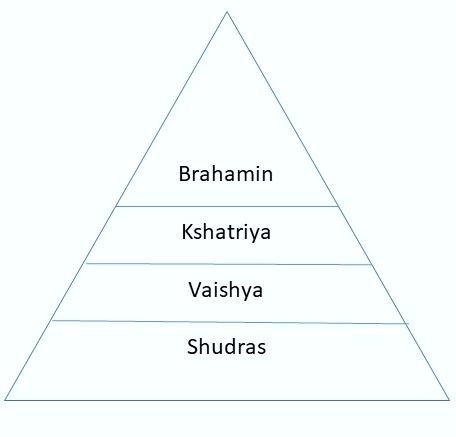
Varna system
Varna system was a social classification of people based on their function and duties in society.
People with certain skills and knowledge were put in different Varnas.
It was not hereditary, which meant people did not born in certain Varna, they were put in a class according to their function and skills.
The earliest mention of the Varna system can be found in the tenth mandala of Rig Veda.
Each Varna was obliged to do the work according to their social strata.
There were four Varnas. Brahmin, Kshatriya, Vaishyas and Shudras.
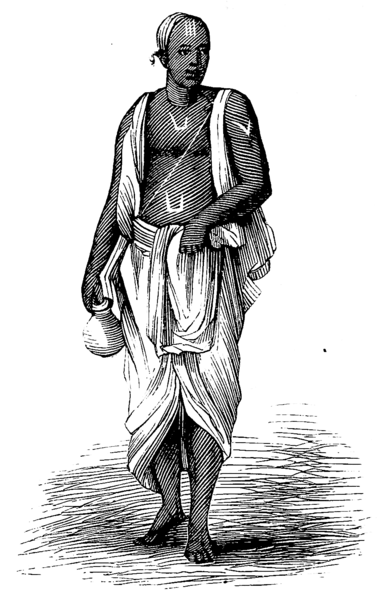
Brahmins were the first Varna. They were on the top of the Varna system hierarchy.
Brahmins were Hindu priests, advisors to the king and scholars.
The Brahmins were generally associated with the task of spreading knowledge of Vedas and performing rituals and sacrifices for the king and receiving gifts.
Brahmins used to set up rules for the proper working of the society.
Unknown author, Page 346 Life in India or Madras, the Neilgherries, and Calcutta, marked as public domain, more details on Wikimedia commons
Kshatriyas hold the second position in the hierarchy of the Varna system.
The Kshatriyas were associated with fighting.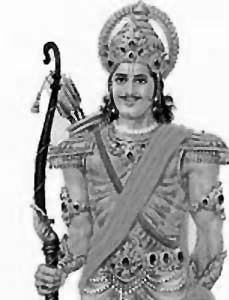
They were the Warrior class, who were formed as kings and soldiers. The Kshatriyas and Brahmins had mutual respect.
Kshatriyas fought the battles to protect the people and they gave Brahmins gifts and rewards for rituals.
Sometimes there was conflict seen between the Kshatriya rulers and Brahmins for supremacy in social strata.
Yashassetty, CC BY-SA 4.0 lt;https://creativecommons.org/licenses/by-sa/4.0>, via Wikimedia Commons
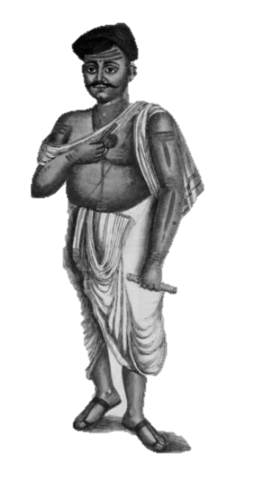
Vaishyas were the third class of the Varna system hierarchy.
Vaishyas simply mean the common people, they were the subjects of the king
Vaishyas were associated with activities like farming, trade, cattle rearing, business and craftsmanship
Vaishyas were the class which paid tributes to the kings. They brought gifts whenever the king organised any sacrifices.
Vaishyas were allowed to sit during the sacrifices.
Vaishyas and their families generally worked for the king.
Etienne Alexander Rodriguez, Public domain, via Wikimedia Commons
The Shudras were the lowest class of class hierarchy in the Varna system.
They were comprised of Manual labourers, Workers, Slaves and land-less tenants.
Shudras were considered untouchables.
Shudras were given menial jobs and they were tasked to serve the upper three Varnas.
Shudras were not allowed to see any sacrifices. They were not allowed to read or listen to Vedas.
Shudras were not allowed to live in the main part of town, they were given special areas where they could reside.
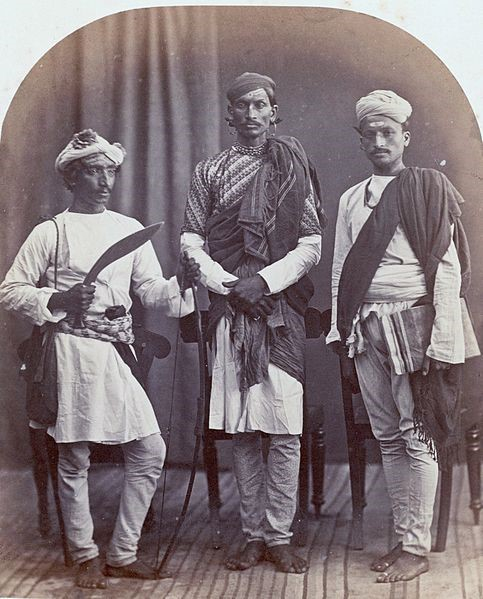
From Left to right: A Gurkha, a Brahmin and a Sood (Sudra) in Traditional Garb in Simla
From left to right: A Gurkha, a Brahmin and a Sood (Sudra) in traditional garb in Simla
The Varna system originated from Rig Ved and many Hindu scriptures from the ancient period. It was a system of classification of people based on their function and skill in society. Those who were associated with religious activities and study the Vedas were Brahmins. Those who went to battles and became kings were from Kahatriya Varna and Vaishyas were related to trade and business and Shudras were manual and menial workers.
The Varna system was flexible in earlier times; people could move from one Varna to another. It was a system based on occupation. The son of a Kshatriya could be Brahmin if he studied Vedas and performed rituals.
In Later centuries the Varna system became rigid and Priests made some laws which restricted the movement among Varna. Now the Varna became hereditary. A person had to follow the Varna in which he was born. Gradually the Varna system transformed into the Caste system which acted as a discriminatory system for Shudras and Vaishyas.
The Varna system was a system of stratification of people based on their function, role and skill in society. It was developed to bring order to society and give the people role according to their skills. It helped in bringing stability to society. This system allowed mobility across the Varna’s and thus people could change their lifestyle and status in society by working hard. In the later Vedic period, some deformities started in the Varna system. The Priests and Upanishads brought strict rule to the Varna system and they stopped mobility across the Varna. The people born in certain Varna had to live in the same Varna regardless of their skill or function. one has to adhere to the role assigned to him at any cost. Another deformity was the supremacy of Brahmins. They declared Brahmins as superior and others as inferior. Shudras were not allowed to read and even listen to Vedas. They were treated very harshly.
Q1. What was the role of Kshatriyas in the Varna system?
Ans. The Kshatriyas were associated with the warrior class and generally the kings belong to the Kshatriya Varna. Their role was to protect the people of the state and resources from the enemy. The Kshatriyas were second on the Varna hierarchy.
Q2. What is the meaning of Varna in history?
Ans. The Varna system was prevalent in ancient Indian society. It classifies society based on the skills and functions of people. It is made from the Sanskrit word, ‘Varna’ which meant colour.
Q3. What is the difference between the Varna system and the Caste system?
Ans. The Varna system came before the caste system, it classified people into four classes based on their function. The Varna system allowed mobility across the Varna whereas the Caste system blocked mobility across the caste.
Q4. What was the function of Vaishyas?
Ans. Vaishyas were common citizens of the state. They were associated with farming and business. Generally, they operated shops and paid tributes and taxes to the kings.
Q5. Why people rejected the Varna system?
Ans. People rejected the Varna system because of the absurd laws made by the Brahmins and they discarded the idea of deciding one's Varna based on birth.